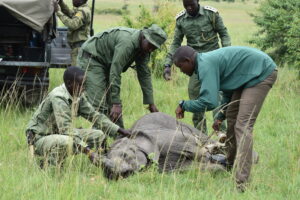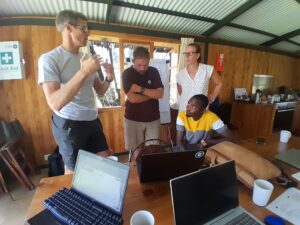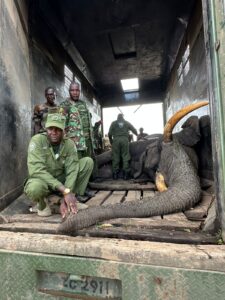Mara Elephant Project has been successful in our area of operation to bring down the level of poaching; however, using the Percentage of Illegally Killed Elephants (PIKE), the same metric for elephant security, we are seeing a rise in conflict related deaths. As the poaching level stabilized over the last two years, MEP has needed to increase our activities to resolve conflict.
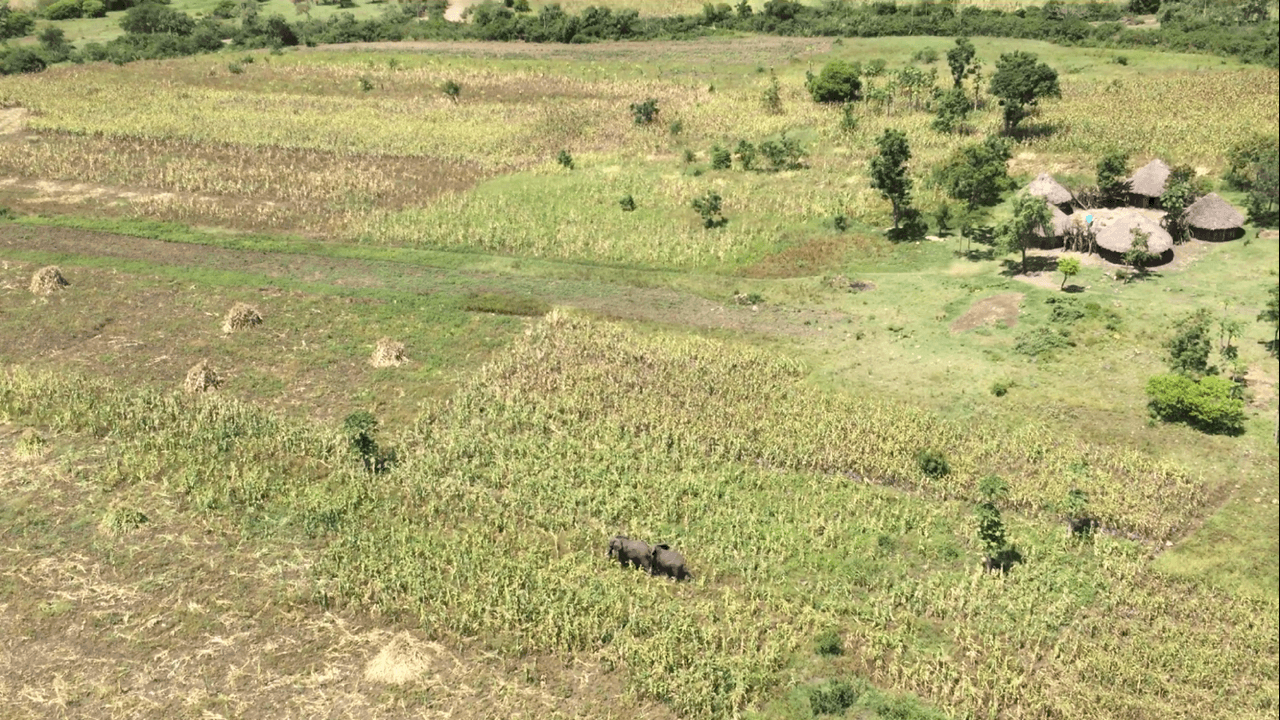
An aerial view of elephants crop raiding.
Human-elephant conflict (HEC) related elephant deaths are illegal deaths of elephants, which means they are recorded as a PIKE data set. HEC can result from direct conflict with elephants in farms or in a community area but can also include revenge killings or harming elephants while trying to get rid of them in a certain area. When elephants go into farms or livestock kraals they are in conflict with communities. At each of these encounters, there is usually conflict, putting the community and the elephants in danger of each other. It’s safe to say, MEP’s main objective in 2017 has been to rapidly respond to these incidents of HEC and ensure the safety of both the people and elephants involved. Unfortunately, we are not always successful.
Of Mara Elephant Project’s 23 collared elephants, Courtney was one of the more recent elephants to be fitted with a satellite transmitting collar.
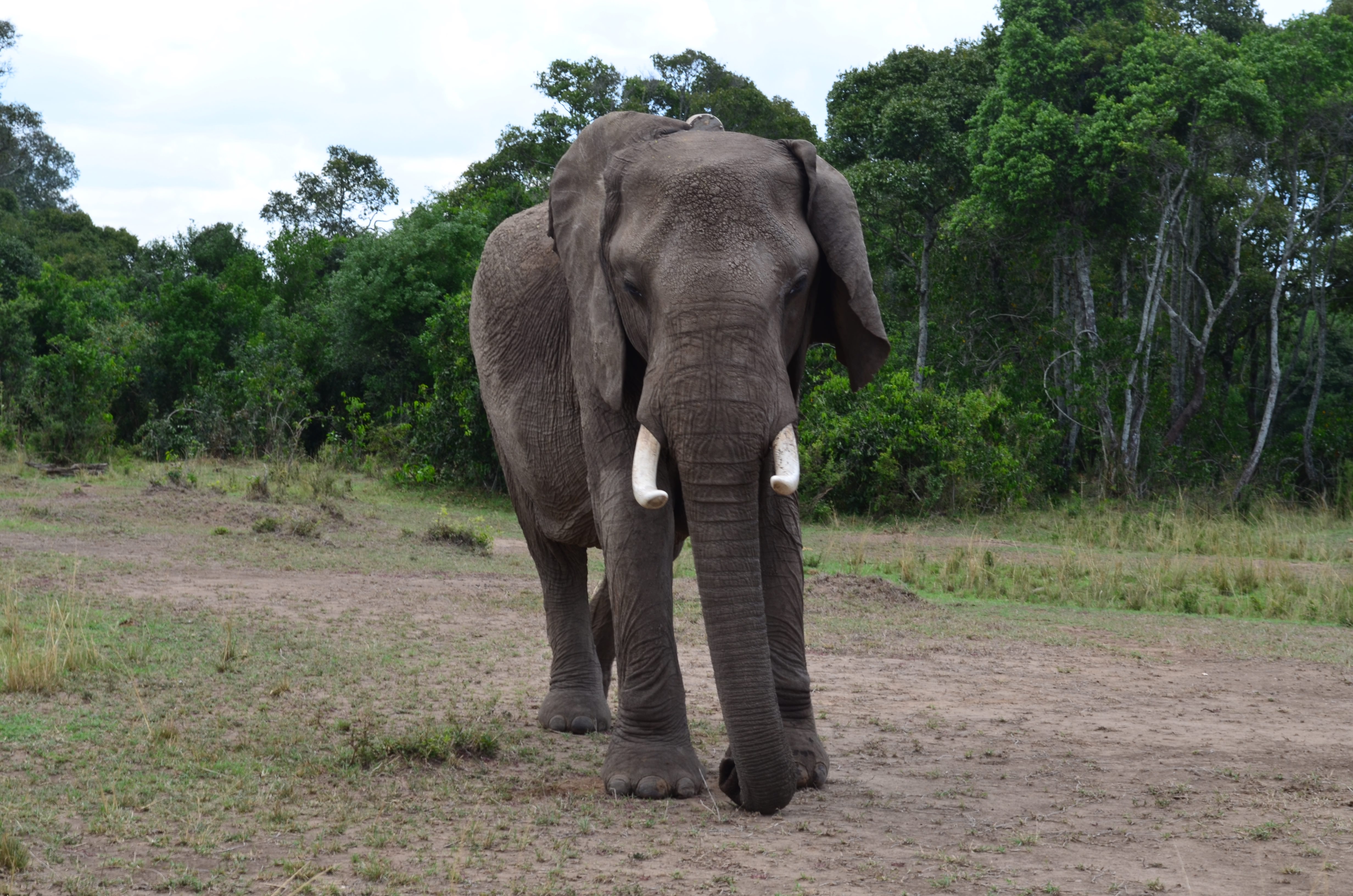 Elephant Courtney
Elephant Courtney
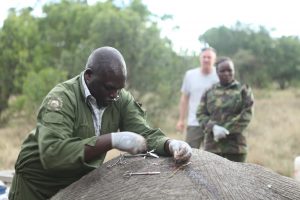 She was collared on October 29, 2016 in Ologolin after she was found wounded by 12 arrows and in need of treatment from the David Sheldrick Wildlife Trust (DSWT)/Kenya Wildlife Service (KWS) mobile vet unit. She was in a harrowing attack by farmers after she and her herd of five females and 3-year-old calf had been actively crop raiding in Olonkoliin. Since the DSWT/KWS vet Dr. Limo (pictured left) needed to treat her wounds, MEP decided we should collar her so we could better respond to her crop raiding and mitigate the human-elephant conflict that had arisen. We also wanted to monitor her recovery from the wounds.
She was collared on October 29, 2016 in Ologolin after she was found wounded by 12 arrows and in need of treatment from the David Sheldrick Wildlife Trust (DSWT)/Kenya Wildlife Service (KWS) mobile vet unit. She was in a harrowing attack by farmers after she and her herd of five females and 3-year-old calf had been actively crop raiding in Olonkoliin. Since the DSWT/KWS vet Dr. Limo (pictured left) needed to treat her wounds, MEP decided we should collar her so we could better respond to her crop raiding and mitigate the human-elephant conflict that had arisen. We also wanted to monitor her recovery from the wounds.
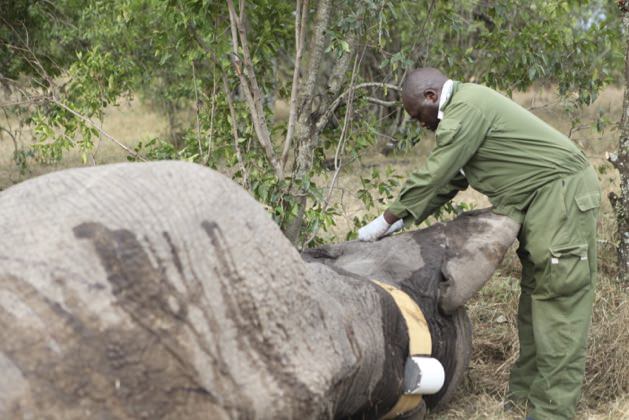 Dr. Limo collaring Courtney after treatment.
Dr. Limo collaring Courtney after treatment.
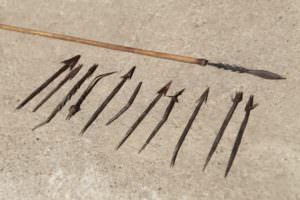 Dr. Limo successfully darted Courtney with the help of MEP’s Karen Blixen Camp Ree Park Safari helicopter and treated all 12 of her arrow wounds (all 12 arrows pictured left) and MEP collared her. After she woke up she safely roamed in the forests along the Mara River in the Maasai Mara National Reserve (MMNR) for the next eight months.
Dr. Limo successfully darted Courtney with the help of MEP’s Karen Blixen Camp Ree Park Safari helicopter and treated all 12 of her arrow wounds (all 12 arrows pictured left) and MEP collared her. After she woke up she safely roamed in the forests along the Mara River in the Maasai Mara National Reserve (MMNR) for the next eight months.
Then, in August 2017, MEP received a call that tourists from Governors’ Camp had spotted Courtney and she appeared to be in physical distress. MEP deployed rangers to confirm this report and when they saw Courtney they realized she needed additional treatments from wounds dating back to her first encounter with those farmers.
So, on August 23, in the Musiara Swamp area of the MMNR MEP and DSWT/KWS vet Dr. Limo successfully provided further treatment to Courtney for an arrow wound that didn’t heal properly. After treatment, Courtney and her baby moved into the Mara North Conservancy (MNC).

Dr. Limo treating Courtney for her additional wounds.
The morning of October 11, MEP received an immobility alert from Courtney’s collar. All of MEP’s collared elephants are monitored 24 hours a day and rangers receive immobility alerts to indicate an elephant has stopped moving, which indicates they are in distress. MEP used the GPS from the collar to see where Courtney was in the MNC and raced to see what happened. When they arrived they found her dead with her baby nearby. Fortunately the baby was able to be directed back to the herd where we hope other females will provide care for her.
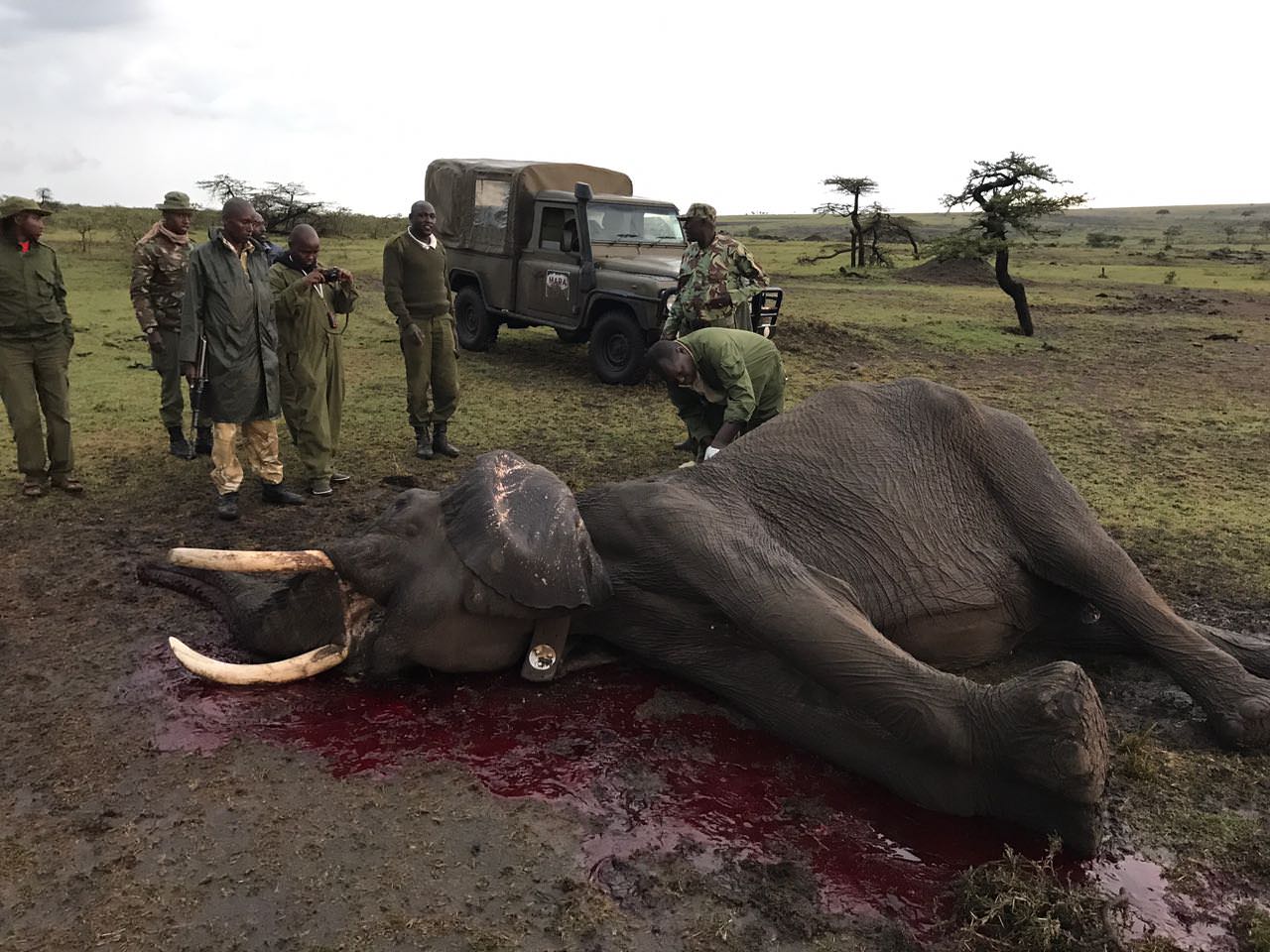
MEP rangers investigating Courtney’s death.
This is unfortunately an example of an elephant that MEP tried to save, but was too late. Collars are an extremely effective method for alerting MEP to human-elephant conflict situations so we are able to rapidly respond and save elephant and human lives. However, some lives can’t be saved from wounds that clearly were already too deep to heal. Though collaring Courtney prevented her from any further crop raiding, the original damage was done. MEP is always upset by the loss of one of our elephants, but this is the reality of the Mara, one we’re working everyday to prevent.
